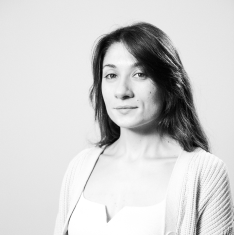How adaptive sports training camps affect the lives of veterans and servicemen
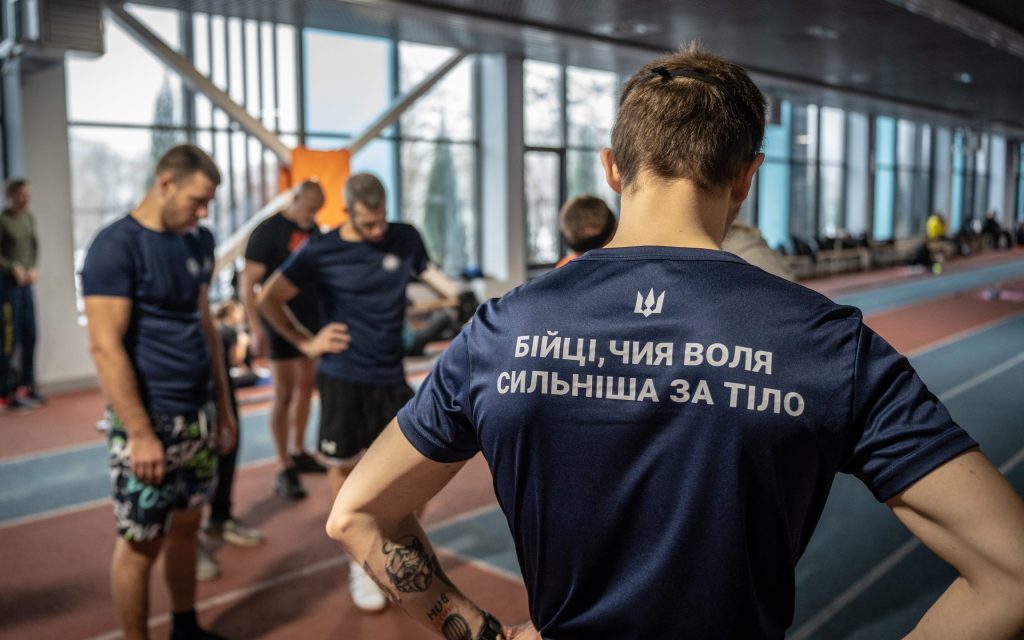
Adaptive sports for the veterans is an opportunity not only to demonstrate sports skills and win a medal, but also to join a community of those with similar experiences. To undergo rehabilitation. To find a new meaning in life. Prove to oneself that it is possible to lead an active life even after an injury or trauma. The training camp that was a part of the National team trials for the United States Air Force and Marine Corps Trials 2024 event which will be held in March in Las Vegas gave such opportunity to its participants. The training camp was organized by The CBA Initiatives Center, the Ministry of Veterans Affairs, the Ukrainian Veterans Foundation, NGO Games Invictus Ukraine and Center for Strategic Communications StratCom Ukraine.
The trials included a training camp from December 1 to 11, 2023, and the competition itself from December 12 to 14. Veterans and servicemen had the opportunity to get acquainted with adaptive sports. Besides, the participants visited St. Sophia Cathedral and tried equine-assisted therapy and rock climbing. They also talked a lot with each other. Soldiers who have been wounded, injured or got ill in the course of combat operations since 2014 and up to now had the opportunity to join the training camp. Importantly, they did not have to have any experience of participating in the Invictus Games or Warrior Games. Thus, about a hundred veterans and servicemen joined the event.
Training camp in this format and for so many people were held in Ukraine for the first time. Previously, National team selections consisted from competitions only. Participants were introduced to adaptive sports directly during the competitions. It is important to investigate how such a large-scale training camp impacts not only sports performance, but also the well-being of veterans and servicemen, their motivation to continue to engage in adaptive sports, life satisfaction, and key indicators related to community involvement, daily care practices, distress levels, etc.
To measure and analyze this impact, the analysts of the NGO “Come Back Alive!” are conducting a comprehensive sociological study in several stages: three stages of surveys (at the beginning of the training camp, at the end and 2 months after the training camp), as well as in-depth interviews with the participants.
It should be noted that the survey was conducted as part of a panel study, which is a repeated study over time that helps measure the dynamics of change. That is, the respondents were the same people, which will allow analyzing in more detail the impact of the factor of training camps participation. However, the main risk of this type of research is panel attrition. That is, for certain reasons, respondents may not be able to participate in subsequent waves, so the number of respondents may differ. Therefore, to improve the quality of the results, data weighting was used in accordance to the main categories: age, place of residence, and military service experience.
In this article, we share the interim results of the study: the first and second stages of the survey to better introduce the participants and illustrate the impact of participation in the training camp, which can be seen even in such a short time.
FIRST STAGE: CLOSER ACQUAINTANCE WITH THE CAMP PARTICIPANS
The first stage of the survey was conducted using a handout questionnaire during the offline registration of participants in the training camp. Thus, we measured the main indicators at the beginning and got to know each participant better. Given the complexities and nuances of the entrance survey, we managed to collect 94 fully completed questionnaires.
There were only aged 20 to 61 among the participants. The most represented age group was 30–34 years old - 23.4%. 16% were men over 50 years old. We also asked respondents about their marital status. At the beginning of the study, there was a hypothesis that marital status affects the well-being and motivation to play sports. However, it cannot be confirmed or denied within the framework of this study, because most participants were married (62%), while 17% were not married or not in a relationship. That is, the group is quite homogeneous in this indicator.
The participants come from different regions of Ukraine. The largest number were from Kyiv and Kyiv region (31%), Dnipropetrovs'k region (15%), and Lviv region (11%). Other regions were less represented. This may indicate that the level of awareness of adaptive sports among veterans varies from region to region, as many of the participants registered on the recommendation of friends, coaches, or commanders who follow the news of veteran sports or are active participants themselves. We cannot say for sure, but this is an important hypothesis to study in the future. It is worth testing to increase the representation of other regions at such events.
23 percent of the participants live in Kyiv. The same number of participants live in other regional administrative centers
In addition to the region, participants indicated their place of residence. We noted different levels of access to sports depending on the type of settlement. 23% of participants lived in Kyiv, and another 23% were residents of other regional administrative centers. Residents of urban-type settlements and villages made up 16%. There were also representatives from district centers and towns. Such a distribution allows to test the hypothesis about the influence of the type of settlement on sports, including adaptive sports.
Among the participants of the training camps were those who were or had been in military service (excluding conscripts) from 7 months to two years (38%) and for more than two years (60%).
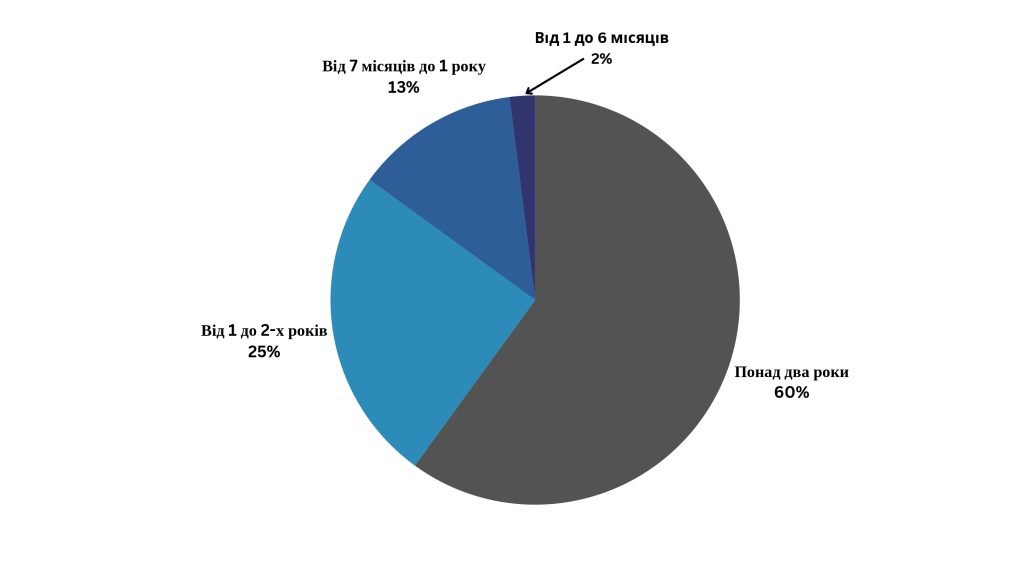
When asked how the respondents joined the ranks of the Ukrainian Defense Forces after February 24, 2022, we received the following answers:
52% came voluntarily to a military enlistment office or military unit;
12% mobilized after receiving a call-up papers;
31% were already in military service at that time;
4% did not join at all.
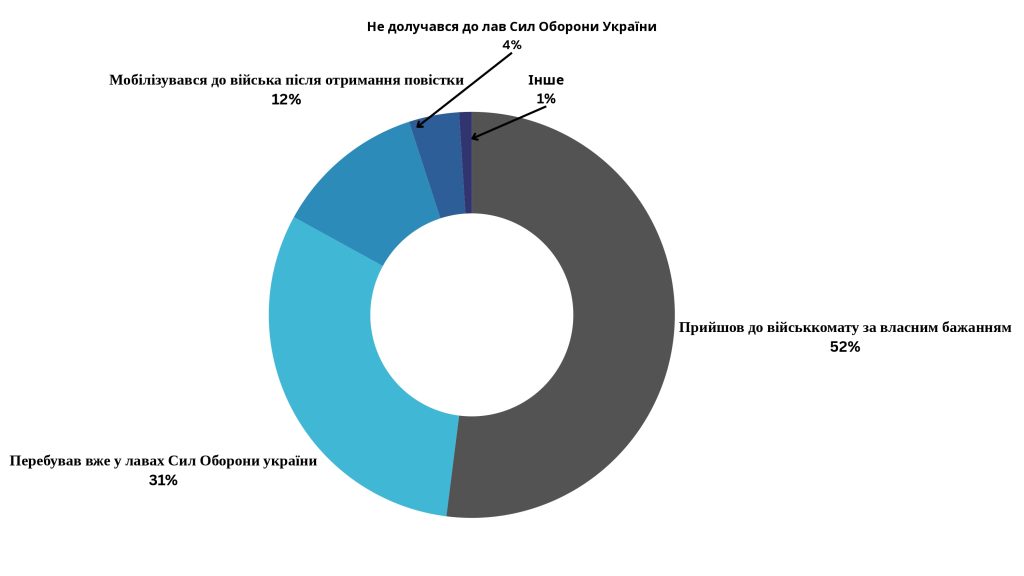
Among the participants were those who were injured during ATO/JFO, so they did not participate in the war phase after February 24, 2022. Overall, 66% of participants had experience in the ATO/JFO, and 34% joined after February 23, 2022.
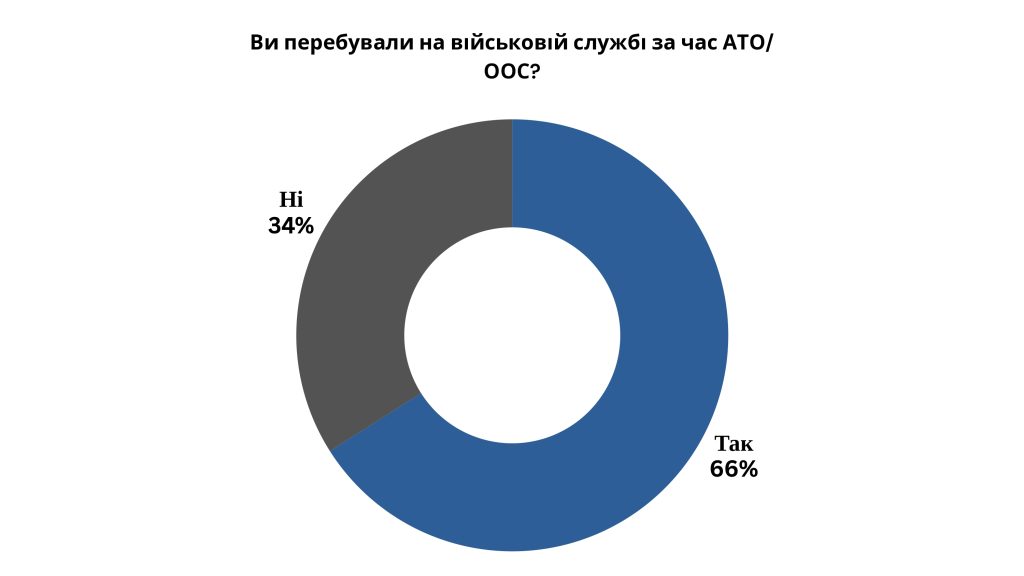
The first stage of the survey included officers (32%), NCOs (31%), and privates (36%).
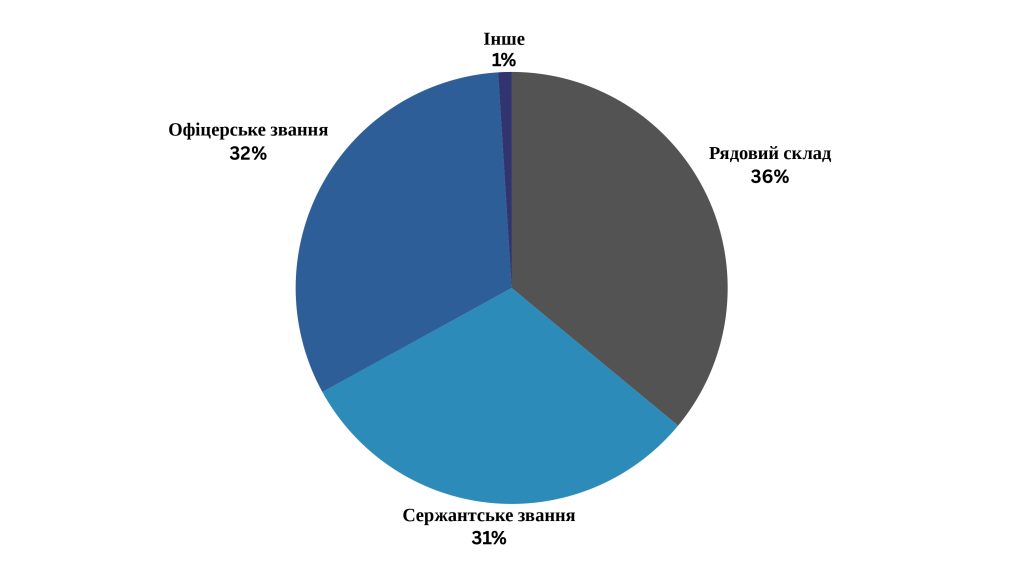
And perhaps the most important question was if the respondent was an active serviceman during the training camp. After all, not all servicemen are discharged from the army after being wounded. Many undergo rehabilitation or treatment and return to the ranks of the Ukrainian Defense Forces. Despite this, they all were able to attend the training camp.
At the beginning of the training, 69% of the participants were active military personnel, while 31% had already retired from the Ukrainian Defense Forces for various reasons: age, health or family circumstances.
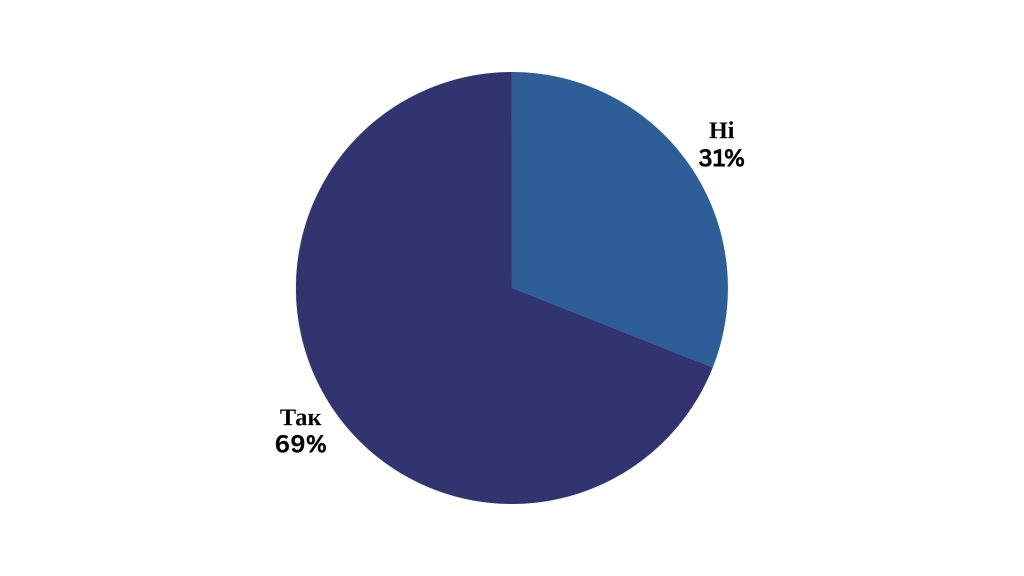
Before analyzing the main indicators of satisfaction, well-being, and distress and comparing them between the stages of the study, it is worthwhile to address what sport is for the participants and what place does it take in their lives.
Most of the participants were involved in sports before military service (85%).
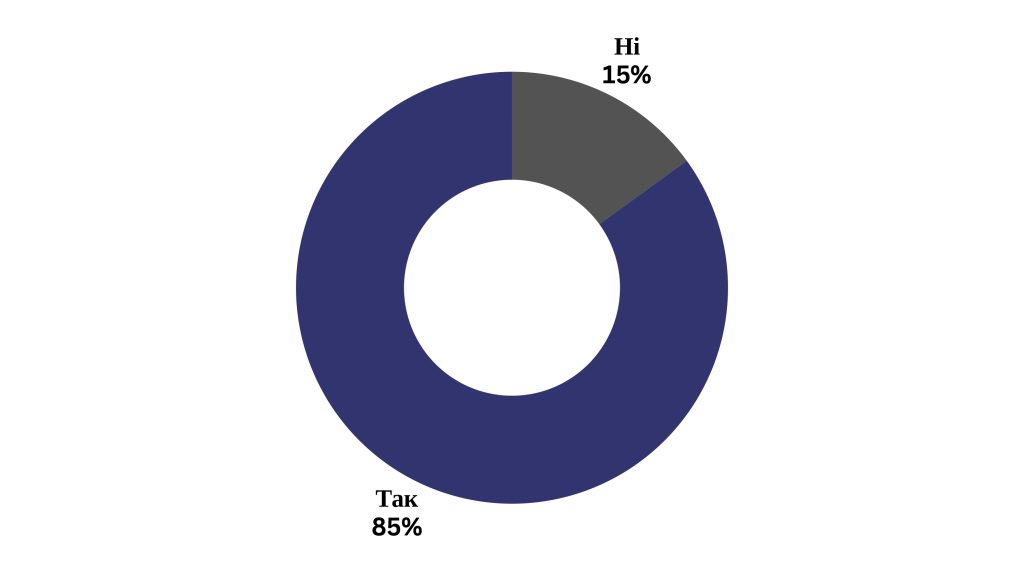
Some of them went into sports professionally and have proof of their sporting achievements, while others do it just for themselves. It is worth adding that everyone has their own interpretation of what sport is, so we cannot determine the level of involvement of participants in sports activities.
To understand better what sport is for each of the participants, we used an open-ended question where everyone could share their thoughts in detail. Here are some of their answers:
“Sport is rehabilitation, both physical and psychological. Thanks to training, support from coaches and the team, I was able to overcome depression. Sport gave me the opportunity to socialize again. It makes life brighter.” - respondent 7.
“Sport is the most affordable way to rehabilitate, maintain and restore your health after an injury. It helps to unite the community. It also helps to set goals, objectives and reach personal heights.” - respondent 34.
“Sport is about life and moving forward. Sports helps me forget about the war and phantom pains” - respondent 42.
“This is a necessary and important part of everyday life. It is an opportunity to demonstrate yourself your potential and become an example for others who have lost limbs. Disability is not a sentence.” - Respondent 55.
“Sport is at the forefront of my life. I always do it whenever possible - it helps me physically and mentally. We defined with the soldiers that physical fitness increases the chance to kill the enemy and survive grave injuries.” - Respondent 80.
Adaptive sports often require the use of specific equipment to adjust any sport to an injury, trauma, or illness. According to the study, 32% of the participants had been involved in adaptive sports before, and for 68%, the training camp was the first time they were introduced to different types of adaptive sports.
The most common adaptive sports among participants are athletics, swimming, and strength training. They are more accessible and do not require the use of specific equipment or special facilities.
Those who are or have been in the military for less than a year have fewer sleep problems
The analysis conducted in the first stage of the study revealed that the factor of place of residence does not affect either wellbeing or involvement into sports activities. The most influential factors among participants are the amount of free time and the time spent in the military service. For example, those who are or have been on military service for more than two years are more likely to engage in frequent recreation or find time for themselves than those who have been on military service for less time. At the same time, those who have serve or have served in the military for less than a year have fewer problems with sleep (the existence of a correlation was measured during the analysis).
SECOND STAGE: CHANGES THAT OCCURRED WITH THE PARTICIPANTS DURING THE TRAINING CAMP
Fewer respondents took part in the second stage of the survey that was held after the training camp, due to difficulties with training schedules, family circumstances, etc. In addition, we used a slightly modified questionnaire, where some of the questions were the same and were used for comparison, while the rest questions were new and were aimed at determining the participants' future plans and loyalty.
In the graphs below, we compare the average indicators for the first and second stage.
A scale from 1 to 10 is used to assess life satisfaction, where 1 is completely dissatisfied and 10 is completely satisfied. The average satisfaction indicator for the first stage is 7.96, while for the second stage - 8.28. That is, the level of life satisfaction of the participants has risen during the training camp. The difference, though, is minor and not statistically significant. While taking a look at the percentage of ratings separately, it is worth noting that more people rated their life satisfaction at 9 and 10 points at the second stage, while at the first stage more people rated it at 8.
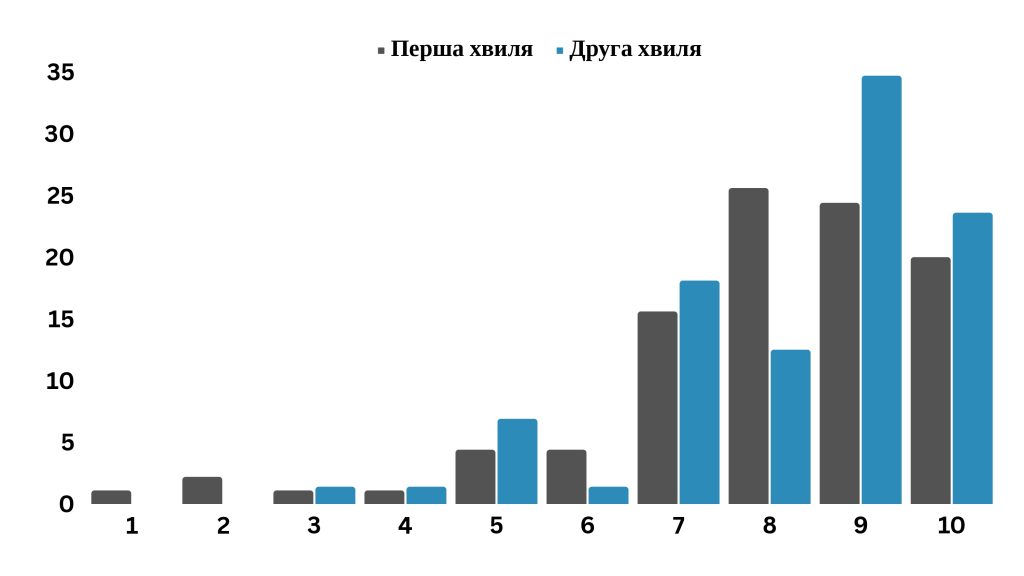
To determine the level of happiness, optimistic expectations for the future, and satisfaction with health, we used a five-point scale: the closer to 5, the more positive the characteristic.
The date in the table demonstrates that the changes are not significant between the first and the second stage, but there is a tendency for the indicators to grow.
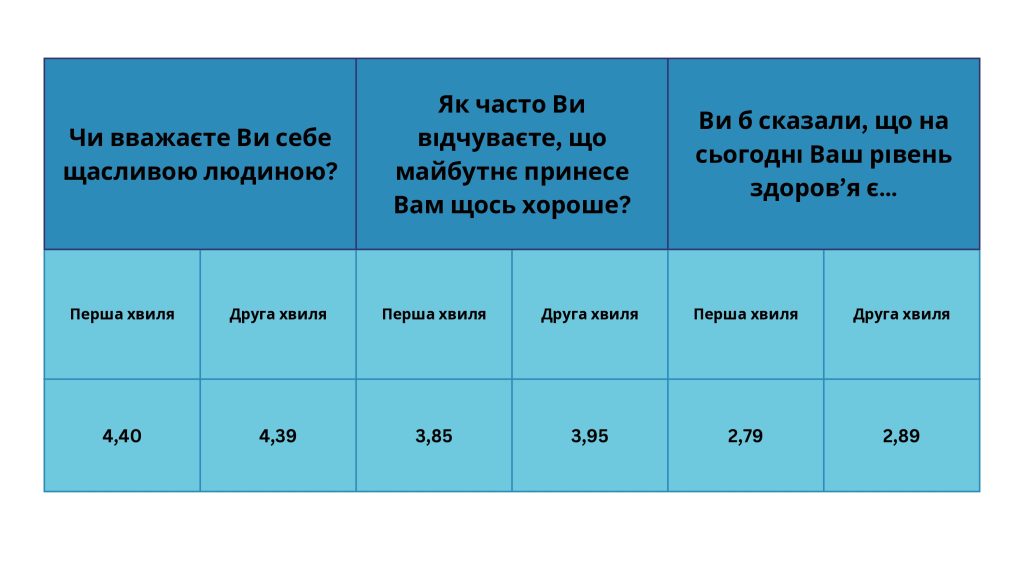
We will be able to talk more precisely about this while analyzing the third stage of the survey, which will be conducted in some time. It will measure indicators and changes in the long term, as training camps lay the foundation for change, and only over time can we see whether they will affect the life of a veteran or a serviceman.
64 percent of participants had a normal level of distress at the first stage of the survey. The number increased to 73 percent at the second stage
Another indicator worth noting is the level of participants' distress. Distress is a psychological discomfort that a person experiences in response to stressors or a strong need for something. It leads to temporary or permanent consequences. 64 percent of participants had a normal level of distress at the first stage of the survey. The number increased to 73 percent at the second stage, which is a significant difference.
Additionally, questions were added to the questionnaire at the second stage of the survey to determine whether and how the participants of the training camps intend to continue to include sports in their lives.
Please note: We used multiple-choice questions, where one participant could choose several options. Thus, the sum of the percentages does not equal 100%, but is significantly higher.
48% plan to do sports to maintain their health; 27% - as a hobby; 82% - to participate in competitions and sports camps; 11% - to get additional education in the field of sports; 24% - to connect their professional activities with it.
There are no educational programs on the adaptive sports
It is worth noting that for some participants, sport is not just a hobby or an instrument for rehabilitation, but also a desired field of professional or educational career. The question therefore arises as to where they can implement their desire to develop in these areas further. So far, there are no educational programs on the adaptive sports. Given that in the future more interest among veterans in adaptive sports and rehabilitation through sports is expected, it is important to raise an issue of those who can help them in this field.
Finally, the participants' subjective assessment of the impact of the training camp on their lives:
53% stated that their physical activity had significantly increased during the training camp;
80% said the training camp had a positive impact on their rehabilitation, and 17% said it was rather positive;
92% are ready to continue participating in sports events of this format;
96% are ready to recommend them to their brothers-in-arms.
We held the survey immediately after the training camp, so the opinions of the participants change over time. Therefore, during the third stage of the study, these questions will also be included in the questionnaire.
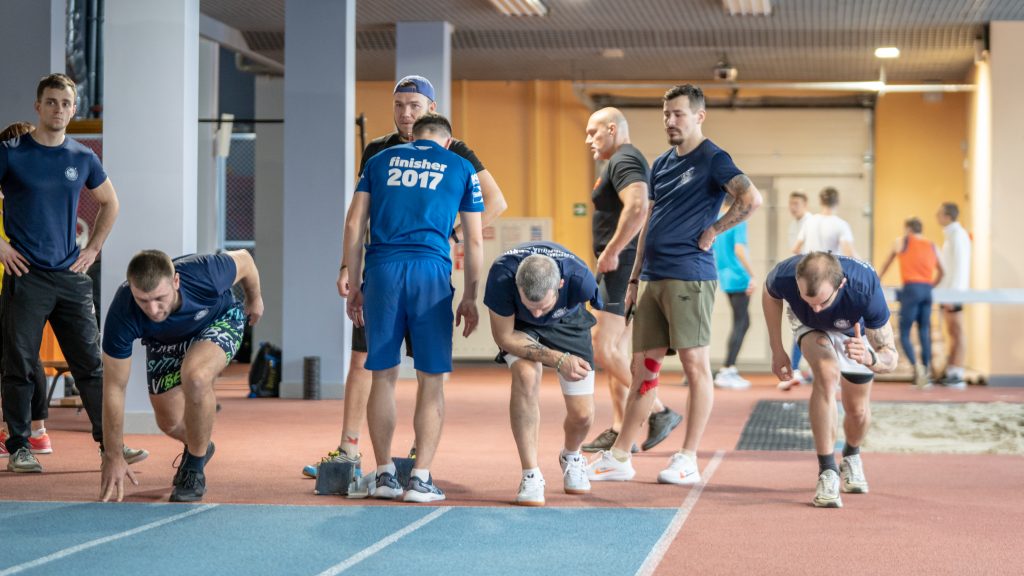
The participants of the training camp came from different regions, had different military ranks and age. At the same time, they were united by sports and a desire to join the community of those with whom they can share their experience. They were at the different stages of their rehabilitation after an injury, combat trauma or illness, had different psychological states and levels of motivation. But everybody was effected by the training camp. Based on the results of two stages of the study, we can now observe that the impact on the participants’ lives was positive.
One of the main objectives of the study is not only to determine the impact of the training camps on the lives of the participants, but also to support practical activities with an analytical component that is lacking in Ukraine. After all, the specific information obtained as a result of the study gives a better understanding of the needs veterans and servicemen have, what obstacles they see in front of them; what we, as The CBA Initiatives Center, can do to ensure that more defenders have the opportunity to rehabilitate through sports after being injured, suffering from combat trauma or illness.
It's not just numbers, percentages and graphs. It's an opportunity to get to know Ukrainian veterans and active military personnel better and develop effective ways to competently support them.
Поділитись

